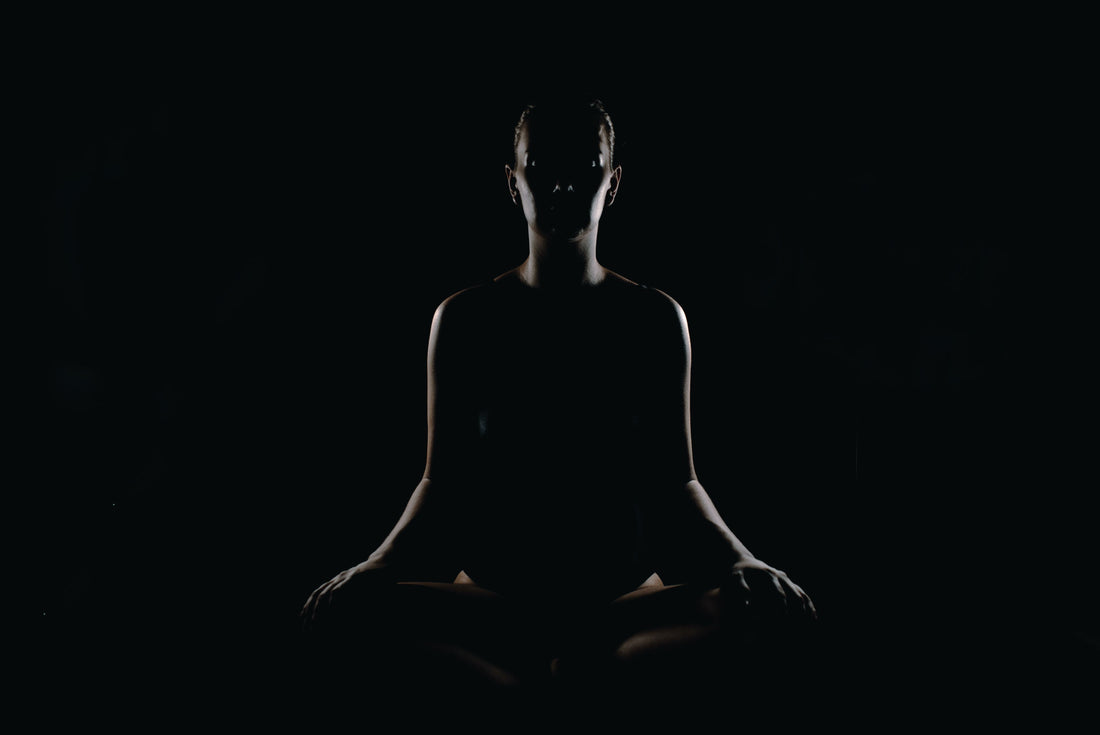For years, I resisted any kind of online practice. I was aware of a handful of communities that met either periodically or exclusively over Zoom, and though I admired the generosity of spirit that made that possible, I wanted nothing to do with it. It felt too distant, too… digital.
COVID changed that for me—maybe it did for you, too. Faced with the choice to keep our community together online or shelve it entirely until it was once again safe to gather in person, online practice suddenly sounded amazing (though I confess, I thought we’d be doing it for weeks, not years). I soon got used to the camera being on me, to the technical hiccups, to the wonder of knowing I was sitting with someone down the street and someone else across the ocean. After three years, we finally started meeting in person again, but we’re committed to keeping the online part as well. It’s become part of how we understand what we’re doing.
An ongoing difficulty, though, is how to work with ritual over a video call. Chanting and bowing make a different kind of sense in the body when you’re in the room with other people. You can hear them, for one thing—the delays that come with something like Zoom turn that harmony into pure chaos, meaning that as you chant the Heart Sutra, maybe the only voices you hear are your own and a teacher’s, beaming in from some room in another city. That feels weird. We also hold ourselves differently when we’re sitting next to someone—the way we hold ourselves is the way we hold the practice, and when no one can even see if we’re wearing pants, we might, despite our best intentions, start to hold the practice a little more casually than before.
With that in mind, I thought I would offer up some principles of form. Not specific instructions—how you sit, stand, bow, and so on will vary from community to community—but the foundation of those activities. I’ve come up with three principles, three simple things to keep in mind in the awkward confusion of any encounter with ritual, whether on Zoom or in a center you’ve never visited before. These three, in essence, are your guide to winging it.
Meditation posture defines all posture. However you sit in meditation, however you hold your body in that part of the practice, establishes the guideline for how you hold your body all the time. In the Zen tradition, that means a straighter-than-usual back and a kind of curiosity and alertness in the body, as if whatever is happening in front of you is really important (because it is). This is awareness of our relationship to the body. If your meditation practice requires a straight back, then holding a sutra back will require the same; eating will require the same; simply standing will require the same.

All activities are done with the whole body. Nothing in a ritual setting is done halfway. Nothing is lazy. We don’t multitask. If you’ve ever sat in a Zoom meeting for work, listening and nodding while drinking your coffee and kind of checking social media on your phone and keeping one ear open for the sound of your kids yelling in the next room and clicking on an email as it arrives, you know what it is to not do one thing wholeheartedly. When we get in that mode, we’re like browsers with ten tabs open at once. In ceremony, we open just one tab: whatever we’re doing in that moment.
In Zen monasteries, I was taught to do this by doing everything with two hands: turn a doorknob with two hands, hold a book with two hands, drink your cup of tea with two hands. Don’t leave one hand idle; don’t leave one hand free to concentrate on something else. Whether you use that little trick or just notice what it is to give your attention, body and mind, to a single task like bowing, or eating, or opening a book, the principle is to fully commit to how you’re touching the world. This is awareness of our relationship with things.
Synchronize with others. Whenever possible, notice how others are moving and let it be a guide for how you move. A clear example is bowing. When the officiant bows, you time your bow to match, so your body reaches its lowest point at the same moment theirs does, and you reach full posture again when the officiant completely straightens up. If you’re doing walking meditation, you submit to the pace of the person in front of you. If the person across the meditation hall bows in your direction, you bow in theirs. This is awareness of our relationship with others. In Zen, there’s the phrase dōjō daishū ichinyo (動静大集一如)—“in activity and stillness, at one with the community.” When others are still, remain still; when others move, move with them, either as part of their flow (like birds in flight) or as a reflection (like an image in a mirror).
We can never know all the specifics of the forms and rituals of a given tradition; that aspect of practice goes too deep and has too many variations for any one individual to completely master it. But we can embody the spirit behind it, even if we’re lost, even if we’re looking at a screen from a thousand miles away. And if we can do that, then we can bring these same principles out into the broader world, lending those same awarenesses—of our own body, or things, of others—to each moment. What a generous way to be.

Koun Franz is a Montana-born Soto Zen priest who trained, taught, and translated in traditional monasteries in Japan. He is the guiding teacher of Thousand Harbours Zen in Halifax, Nova Scotia (his talks can be found on their podcast), a psychotherapist, and former editor of Buddhadharma: The Practitioner’s Guide.

